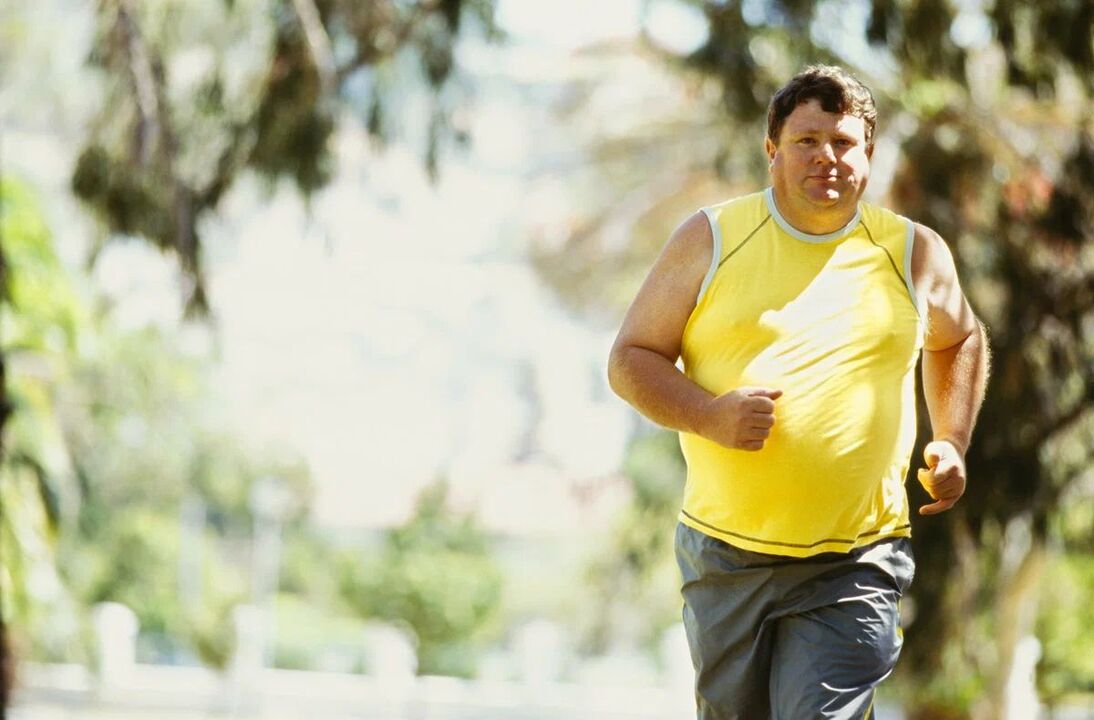Today, running is one of the most popular ways to combat excess weight. It really helps burn excess fat, firms the skin and promotes health at the same time. But in reality, not everyone gets the results they want. And the point here is not that running is ineffective, but that a person does not know how to run correctly to lose weight. Let's try to understand it.
The Benefits of Running to Lose Weight and More
Running to burn fat is a simple and effective way to lose weight. It is not for nothing that this sport has gained immense popularity all over the world. He has a numberbenefits, including the following:
- Running is accessible, it requires no financial investment or special equipment, so anyone can do it.
- This is a safe sport, and if you follow the basic rules, it will only bring benefits.
- Regular exercise really helps you lose weight because it provides a powerful cardio workout. On average, one hour of running burns 500 to 700 kcal.
- Running provides a person with comprehensive benefits, and this concerns not only the figure, but also health. It helps combat stress, strengthens the nervous system, trains the heart and blood vessels, improving their functioning.
- Jogging normalizes the functioning of the digestive system and speeds up metabolism.
- Running perfectly strengthens the muscles and keeps them toned.
- This type of activity stimulates the elimination of harmful waste, toxins and excess fluid from the body.
Although running helps everyone lose weight, it must be taken into accountcontraindications, and they are as follows:
- serious problems with the functioning of the heart and blood vessels (heart defects, heart failure, blood pressure problems);
- phlebeurism;
- bronchial asthma;
- endocrine system disorders;
- severe vision problems;
- inflammatory processes in the body;
- Infectious diseases;
- problems of the musculoskeletal system.
Overweight people should consult a specialist before starting jogging, as they could harm themselves. In their case, a brisk walk or jog may be more appropriate.

To lose weight through running, it is recommended to study different options and choose the best one. It is also very important to know how to run correctly to burn fat, to study all the rules and recommendations.
Why running is good for weight loss
So, does running help you lose weight? Let's see that.
Problems with excess weight are usually typical for people leading a sedentary lifestyle. In addition, now, a good half of the population owns a personal vehicle. Thanks to cars, we not only stop running, but also walk. As a result, the body accumulates fat and muscles atrophy from uselessness.
To avoid obesity and the unpleasant consequences on your appearance and health, you need to pull yourself together and go running. This is the simplest type of physical activity and accessible to everyone. And let it just be a brisk walk at first. As soon as your body adapts, start running.
Let's take a closer look at how running burns fat?
Running gets your heart rate up, which is why it's classified as cardio. With an accelerated heart rate, more blood passes through the heart per unit of time than in a calm state. The lungs also start to work harder and your blood is actively enriched with oxygen. Oxygen saturation occurs in every cell in the body, from the tips of the toes to the brain. Metabolic processes begin to take place faster.
Running requires energy. To ensure its constant influx, the body depletes its internal reserves. First, the glycogen stored in the liver is consumed, then the fatty deposits in our body are used. Therefore, running and being overweight are incompatible concepts. If you actively move and burn more calories than you consume, your excess weight will disappear. Running and losing weight are interconnected things.
- For jogging (7 to 9 kilometers per hour), fat burning begins after 20 to 30 minutes of continuous running.
- With interval training, the process of fat breakdown begins much earlier: you don't need to run for an hour to start fat catabolism. But interval running is quite a heavy load and this type of cardio is not suitable for everyone.
When wondering if running helps you lose weight, it is important to clarify its type and duration. If we talk about classic jogging at an easy pace, the duration of the workout should be at least thirty minutes.
How to Run to Burn Fat: Basic Rules
We already know that the answer to the question of whether running helps you lose weight will be positive. However, there are a number of nuances that need to be taken into account for jogging to actually produce results. Let's take a closer look at them.
Runtime
Please note that the duration of your run will depend on the intensity of your training. It is also necessary to take into account the level of physical fitness and choose the load that will be optimal. It is recommended to start with runs that are not too long and gradually increase their duration, as well as the running distance.
It is recommended to runat least 40 minutes, because only after this time the body begins to consume not calories, but directly the hated fats. Many experts recommend interval running - it increases endurance and is great for losing weight.
Prepare and complete your workout
A good fat-burning run shouldn't start and end like that. Certain rules must be respected.Before training, consider the following:
- It is recommended to eat at least two hours before training in order to burn fat;
- It is useful to take a contrast shower beforehand, which will help to tone the muscles and blood vessels, so it will be easier for the body to withstand the load;
- Before the main part of the lesson, do a short warm-up - this will help prevent injuries and muscle pain, as the body will be ready for stress.
Between workouts, you need to control your diet. Naturally, it is not recommended to eat sweets, fatty foods and other foods that are detrimental to your figure. Limit your salt intake, as it tends to retain fluid in the body, increasing body volume. It's also important to drink enough water, and you can do this during your workout as well.

After a race, the following recommendations will be useful:
- Stop gradually, not suddenly. Transition from running to walking and gradually slow down. This will help restore breathing and heart rate and force the body to burn even more calories.
- After your run, take a hot shower, which will help calm your muscles and nervous system.
- Avoid hypothermia. While running, the body heats up and a slight breeze or draft can harm your health.
Selection of training intensity
An important point in how to run to burn fat is the intensity of running, which determines the speed of weight loss and the final results. It is important to remember that it is important not only to lose weight, but also not to harm your health.
The more intense the workout, the faster the energy is consumed. Running calmly and relaxed is harmless to your health, but it is more suitable for staying in shape than for losing weight. And too intense training can lead to exhaustion of the body and, as a result, begin to lose not only fat, but also muscle, and the cardiovascular system can suffer from excessive stress.
That is whyloads should be increased gradually and consistently.If you're new to running, start with minimal exercises and increase them over time. You can determine the intensity of your workout yourself by monitoring your heart rate. Typically, a good fat burning effect gives a pulse of more than 130 beats per minute. However, if this number exceeds 150, then the load may be too intense. At the right intensity, heart rate should return to usual levels no later than half an hour after finishing the run.
Clothing and shoes
Proper equipment also plays an important role in running performance. Shoes and running suits for weight loss should be as comfortable as possible and not restrict movement.
Clothing should be chosen from natural and breathable materials.Canuse a special suit to lose weight, allowing focus on certain problem areas. For example, you can buy panties and shorts that speed up the weight loss process.

You should choose shoes that are comfortable, lightweight and fit perfectly. This will help reduce stress on the joints and minimize the risk of injury.
Those who wish to reduce abdominal volume are often recommended to usebelt for running and losing weight or cling film. In principle, it is useful, but do not hope that a miracle will happen and you will lose weight in three workouts. These elements help to speed up the process of getting rid of excess fluid, which also has a beneficial effect on the process of losing weight. There are also belts with a massaging effect.
Regularity of training
How often and for how long should you run to burn fat? Regularity is the most important key to success. The best option is to run 3 to 5 times a week. To speed up the achievement of results, you can alternate running with other types of activities, for example, weight training or swimming. It is recommended that men combine running for weight loss with strength training.
Don't expect quick results. Explicitchanges for the better will be noticeable after 6-8 weeksregular workouts.
By knowing how to run correctly to lose weight, you can improve your appearance without harming your health. In addition, it is recommended to respect the following recommendations:
- As you run, make sure tocontrol your physical condition.Pain and dizziness are not acceptable. Breathing must remain regular.
- You can run both on a treadmill and in open spaces.The first option is good because it is available in all weathers. The second allows you to enjoy the beauty of nature and breathe fresh air, but due to weather conditions it will not always be available. It is recommended to run not on the asphalt, but on the ground - this has a beneficial effect on the level of endurance and will allow you to correctly distribute the load.
- Make sure your running technique is correct.
- Posturewhile runningshould be level.Breathe evenly. Changes in pace should be fluid.
If you want to burn fat in a specific area while running,You can respect the following technical recommendations:
- To lose weight in the legs, it is recommended to use a technique with high hip lifts, include running with an additional step in your workout and alternate running with jumping (with orwithout skipping rope).
- To lose weight in the stomach, also use your abdominal muscles and always control their tone.
If you follow all the rules and there are no contraindications, you can safely start running and you will soon notice obvious changes for the better. Also, don't forget about proper nutrition and other types of exercises - in combination you will get an effective program that will help you achieve an ideal figure. As a bonus, running will help you improve your health and forget about stress and depression.
How to build strength, endurance and burn fat while running

People often underestimate running or view it one-sidedly. For example, if you want to lose weight, go running. If you want to train your heart, run too. Some see it as an opportunity to set a personal record and prove to themselves that they can run 10 km without stopping. For some, running is a way to relax the brain after an intellectually or nervously stressful day at work. This also happens the other way around: an excellent exercise in the morning to gain strength, energy and complete the planned work plan in record time.
A universal but insidious discipline
On the one hand, everything is like this. On the other hand, rolling power is in many cases overestimated or not taken into account at all.
Thus, running increases the effectiveness of strength training - it increases the working weight and training intensity. It is an important help in getting rid of excess fat. That's if everything is done correctly, which we'll talk about below. There are also opposite cases.
For example, a person decided to lose weight - it doesn't matter if it's a man or a girl - and let's run furiously. After all, he had heard out of earshot that running helped you lose weight. The comrade sheds seven sweats, red as a lobster, his heart comes out of his chest, his legs give way, there is not enough air, but he continues to move his legs which have become weak - he has to run these 3-4km.

I ran for a month three times a week, suffered a lot, stood on the scales, but there were no results. The reflection in the mirror hasn't changed much either. This is the best case scenario. At worst, he started to look bad, his health wasn't great either, his knees hurt, he became emaciated (there are fewer muscles, the fat didn't go anywhere), andthe pitiful 2-3 kg lost from a quintal of total body weight is not at all pleasant.
The fact is that you need to run correctly and build the training process wisely, not forgetting about nutrition and a number of other factors. Let's talk about everything in more detail.
Suitable for everyone
The running training system, which I will discuss below, is universal. It is equally suitable for a completely untrained overweight person who decided to put his body in order, as well as for an advanced athlete who has been training with weights for years, but ignores running for various reasons.
For example, your knees hurt, you are out of breath, your muscles "burn" (do not burn). I can safely classify myself in the latter category, and I have already touched on the issue of running more than once, but only now have I found truly effective methods for it. to use.
About ten years ago, I conducted an experiment: I wanted to run 10 km at a time. I got results, but it was difficult and took more than three months. The hope of eating tasty treats while losing fat through a long run didn't pan out. And I ran 10 km with difficulty, which is called "I can’t". Then I more or less got used to running (before that I hated it at all), but these are flowers compared to the results of a reasonable approach to training.
Where to start

There is no need for preparation or long preparations. We ate normally, an hour and a half later we put on old sneakers, walked to the nearest stadium with rubber tracks, set the timer on the watch or smartphone toone hourand I ran at a leisurely pace. Only a few points are important:
- Don't run on asphalt.A stadium with a rubber surface is acceptable, a treadmill in the gym is acceptable, dirt with grass is acceptable. Asphalt is not acceptable, but it places an excessive load on joints and ligaments. High-quality sneakers, selected individually (how to do this, are written here), will partly solve the problem with hard surfaces, but this is not a panacea and not everyone has such an opportunity. But you can run on the surfaces described above in any, even the most anonymous Chinese sneaker (be prepared for calluses from these shoes).
- Work within your aerobic threshold.I described the theory in detail inThis item(section "Aerobic training"), I will not repeat myself, but I will summarize briefly. If you have a heart rate monitor (any type - optical, chest mounted), work in the heart rate range of 120-150 beats/min. The main thing is not to suffocate - there must be enough oxygen. Without a heart rate monitor, use your breathing as a guide. As soon as you start to choke, it becomes difficult - take a brisk walk until your breathing is restored, then run lightly again. And you work like that for an hour. Even if you walk most of the time.
- After 60 minutes, record the distance you have traveled during this time. Next time, try running and walking more.Whether it's 100 meters, 200, but more. If you do everything correctly, you won't have to get tired. The body itself adapts to any reasonable load with a reserve. In this case, we focus on breathing and heart rate, we do not overload the body, and it will react by adapting with compensation. I rested for a day, came back to the stadium, ran/walked for an hour - looked at my smartphone (if it can count steps), activity tracker or countedlaps, and you see, you covered more distance, but at the same time time when you did not suffer or get out of breath while running. I speak from my own experience.
Working according to this system, in 2-3 months an untrained person will learn to run for an hour without breaks and at a good pace, without being out of breath and exhausted. General well-being will improve, endurance will increase and weight will decrease, provided that the citizen does not start eating more, thereby compensating for the increased energy consumption.

ButThe devil is in the details. Yes, it is a working system that I have tested personally. You can take it and use it right now without going into details.
If you want to get the most effective result, whether it's burning fat, improving strength results in the gym, or all of these together, then read the next part of this series of articles, in which I'll talk about how to run without knee pain, why you should run strictly 60 minutes, and how to burn fat and maintain muscle.

It's real, I checked it myself. People often underestimate running or view it one-sidedly. For example, if you want to lose weight, go running. If you want to train your heart, run too. Some see it as an opportunity to set a personal record and prove to themselves that they can run 10 km without stopping. For some, running is a way to relax the brain after being mentally or nervously stressed.
Running to lose weight: how to burn more calories?

Running is one of the most effective and fastest ways to train for weight loss. An increase in heart rate when running contributes to the consumption of large amounts of oxygen, thereby increasing energy expenditure, which leads to fat burning. For quick and desired results, it is important to have the right load when running, to train at the right time and in the right mode.
How to run well to lose weight
One of the important factors that influence running on weight loss is the high consumption of oxygen, the main fat burner. It is not for nothing that running is called aerobic exercise, because it is done with available oxygen.
An important condition for training aimed at losing weight is a well-ventilated room, or fresh street air, and good breathing during running.
It is important!Correct breathing when running should be accompanied by rapid and strong inhalation, and exhalation should be, on the contrary, gradual and smooth. You should inhale through your nose and exhale through your mouth.
Another important factor in losing weight is your heart rate zone.Heart rate plays a crucial role in weight loss.
- Lower heart rate threshold, at which fat burning is maintained, is 120 beats per minute.
- Upper threshold, which preserves the burning of fats, not muscles, and the heart muscle does not experience excessive stress, is 160 beats per minute.
These are averages. But for everyone you can calculate an individual heart rate zone, depending on age.
We subtract your age from the maximum heart rate of 220 beats per minute. Let's take the example of 30 years.
- 220 - 30 = 190 beats per minute - we get our maximum heart rate.
- We multiply our maximum by 0. 6 to calculate 60% of our own maximum.
190 * 0. 6 = 114 beats per minute - the lower limit of the pulse. We calculate the upper limit of the heart rate, 80% of the maximum.
190*0. 8=152 beats per minute.
Therefore, at the age of thirty, the permissible heart rate zone is 114 to 152 beats per minute.
How many calories are burned while running?
In one hour of running, you can lose on average up to 700 to 800 kcal. Indicators depend on the degree of load, age, weight and physical fitness.
How much should you run to lose weight?
The duration of the workout also plays an important role.To achieve your goals, you should not exceed 60 minutes of running.Training for more than an hour will not only overload the body as a whole, which, on the contrary, will slow down weight loss, but will also begin to burn muscle fibers.
But alsoLess than 20 minutes makes no sense for training.
To run effectively, it is important to rest less without lowering your heart rate, but it is not necessary to run at the same pace. Interval jogging is also suitable for fat burning, in which you spend more time running and a little less time walking.
You can run both outdoors and on a treadmill in the gym. Special simulators are adapted to set the angle of inclination - to simulate an uphill climb. This method is perfect for interval training: instead of resting while walking, walk up a hill. By increasing the load, you can burn more calories and also put more strain on your glutes and hamstrings.
When is the best time to run to lose weight?
For each person, depending on their pace of life, the best time to train will be different.
Research has shown that for most people, effective training occurs in the afternoon, especially in the evening.
One of the most popular ways to lose weight is to run on an empty stomach in the morning. After sleep, glycogen stores are depleted, so the body uses its own fats for energy. Such training should not be long, 30 minutes is enough, otherwise, in addition to fat, there is a risk of loss of muscle mass.
There can be two half-hour training sessions per day - in the morning and in the evening.
3 to 4 training sessions per week are enough.Rest from aerobic exercise is no less important than that from strength training. The body needs time to recover; without it, continuing the fat burning process will be impossible.
It doesn't matter what time of day you exercise, if your body is rested after night and full of energy, a morning run will bring no less benefit than an evening run. It is important to feel your own body here.
Execution program for losing weight in tables
The training program is designed for several difficulty levels, both for running outdoors and on the treadmill. It may take 2-4 weeks of training to adjust to the program. If running becomes easier, move to an advanced level.
Outdoor Running for Beginners
interval time
| Run | 2 minutes |
| Fast walk | 2 minutes |
The first workouts last 30 to 40 minutes. Each week you need to increase the duration of the session and the duration of the race.
Outdoor running for those who are fit
interval time
| Run | 5 minutes |
| Walk | 2 minutes |
Training should be40 to 60 minutes maximum.
Gym workout on treadmill for beginners
interval time
| Run | 2 minutes |
| Walk on a slope | 2 minutes |
Treadmill for advanced
interval time
| Run | 5 to 10 minutes |
| Walk on a slope | 2-3 minutes |
Don't start running right away on cold muscles. After exercise, it is advisable to stretch the muscles.
If necessary, the load can be increased by increasing the speed and reducing the rest time. So you can go from interval training to continuous jogging for an hour.
Conclusion
Indeed, running is a quick and easy way to lose weight. An important condition for training is correct breathing, pulse and load-rest ratio. Remember that to lose weight it is important not only to run, but your calorie expenditure must exceed your calorie intake. Accordingly, it is necessary to monitor your diet, not overeat and limit the consumption of simple carbohydrates.

































